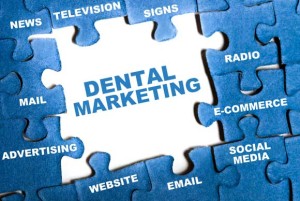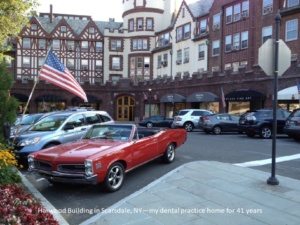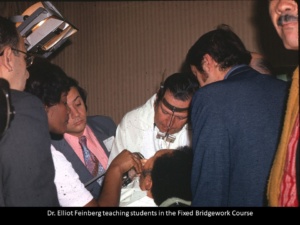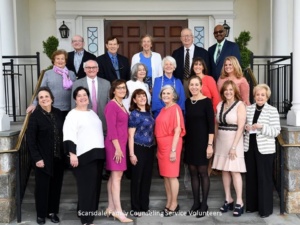
Some Thoughts on Dental Practice Marketing

When I started in practice, all a dentist had to do for marketing was to hang your shingle on the front door. No one talked about marketing and advertising was not permitted. In fact, the dental association had strict rules for displaying your shingle!
My father was in a five-story building that offered no conspicuous shingle for the practice. But he had an ingenious approach to marketing. He gave courses to dentists and donated all the proceeds to the Ninth District Dental Association for 40 years. Each year he gave two courses: seven Wednesday mornings for the fixed bridgework course and 7 Wednesday mornings for the precision attachment course. The courses not only featured slide lectures but included live demonstrations of every step on a patient. I had the honor of teaching with him for 17 of those 40 years, along with Dr. Sam Jacobs and Dr. Elly Devine. In return for this extraordinary education, dentists who attended the classes referred their most difficult cases to our office.

In addition to the classes, my father also gave four evening continuing education courses each year—beginning in 1964 through the Westchester Academy of Restorative Dentistry to course graduates. The Academy ultimately gave birth to this website: ONLINE World Academy of Restorative Dentistry.
When my father passed away in 2000, the world was different. The advent of implants and the economic downturn conspired to reduce the number of referrals from dentists. It became clear that it was no longer feasible to continue the in-office courses. In my father’s day, patients referred all of their family members and friends to the practice. In my day, family members moved away, so they did not become patients. As patients became older, their social circles also diminished, and they knew less people they could refer to the office.
Unfortunately for me, I inherited a practice of only 300 patients. A normal healthy practice has at least 1000 patients. A practice management consultant told me that I had to do something to attract new patients or I would not survive.
That something was “marketing.” I did not like the idea of direct mail marketing and advertising by dental professionals still carried a stigma in my mind even though it was now “legal.” I soon learned that there are many other ways to market a dental practice. I joined every local organization I could think of—I joined the Rotary Club, the BNI, the Scarsdale Family Counseling Service, the Scarsdale Chamber of Commerce, the Westchester Business Council and I served in various officer positions of these organizations. From the BNI I learned to give a short “elevator” speech. I became extremely adept at giving one-minute summaries of what I do th at separates me as completely unique and special in my field. I also wrote articles for the Healthcare Newspaper, and I arranged to be interviewed on local radio and TV Health programs.
at separates me as completely unique and special in my field. I also wrote articles for the Healthcare Newspaper, and I arranged to be interviewed on local radio and TV Health programs.
As it turned out I just loved marketing! I met amazing people in the volunteer organizations that I served. I loved being a leader in the community. I realized that when you are on the third floor of a building, no one knows that you are there—you simply must get out of the office and interact with the community in order to become known and attract new patients.
In fact, with my BNI “elevator” skills I marketed myself everywhere I went—and I collected patients everywhere. I got some of my best patients from sitting at the lunch counter at the local diner interacting with strangers.
I got patients from the gym, from the temple and from my apartment complex without overt intention—all because of the BNI “elevator” speech that I perfected. Everyone you meet asks what you do. You have an amazing opportunity to make a profound impression with your answer.
I know so many practitioners that hole themselves up in their offices for 8 hours straight because they think that is the most productive use of their time. Meanwhile I procured some of my biggest cases by stepping out of the office during lunch hour! I’d have to say in retrospect that eating lunch was a great deal more productive than squeezing that emergency into a lunch hour!
As a result, I was able to make my practice go for 18 years even though I started at tremendous disadvantage—no easy feat.
The skills that you acquire from ONWARD really will separate you from the average practitioner. I believe that patients desperately want these skills. They DON’T go to dentists for extractions and implants. They want to save their teeth.
All you have to do is effectively communicate that you can help patients in ways that few practitioners can. Your ONWARD skills have the potential to open doors for you in ways you could never imagine.
